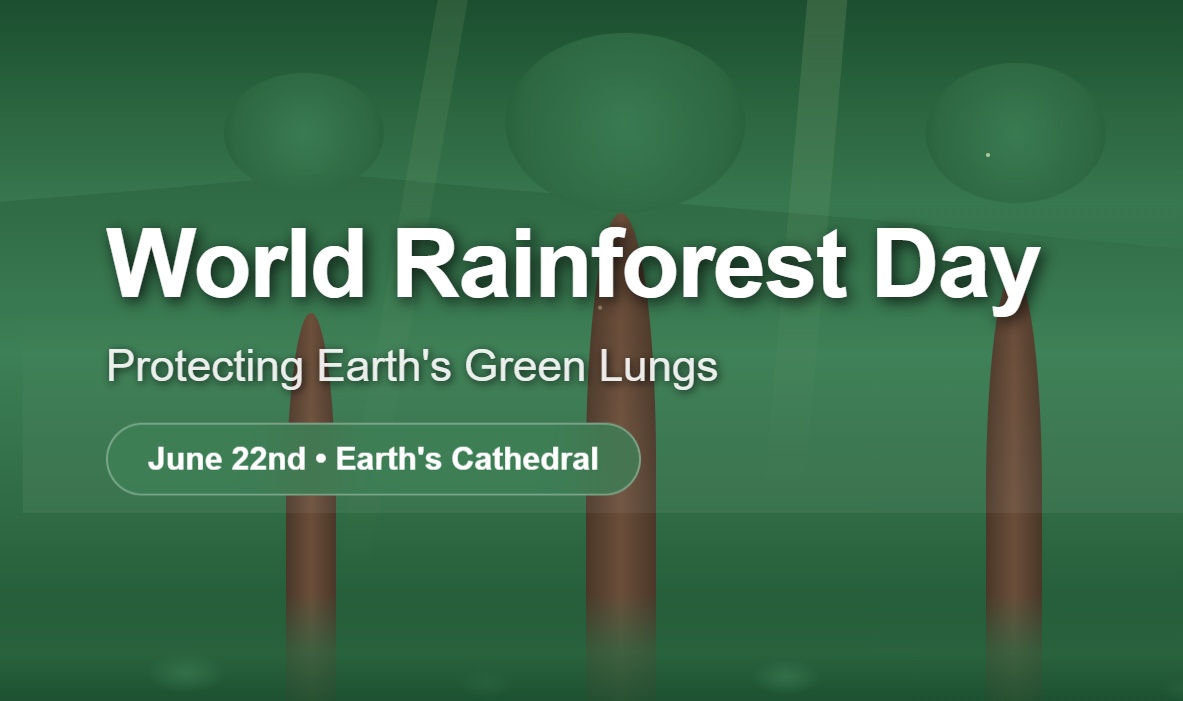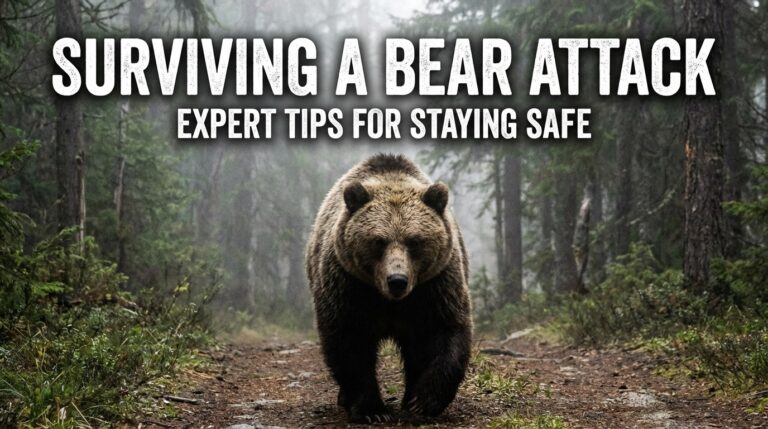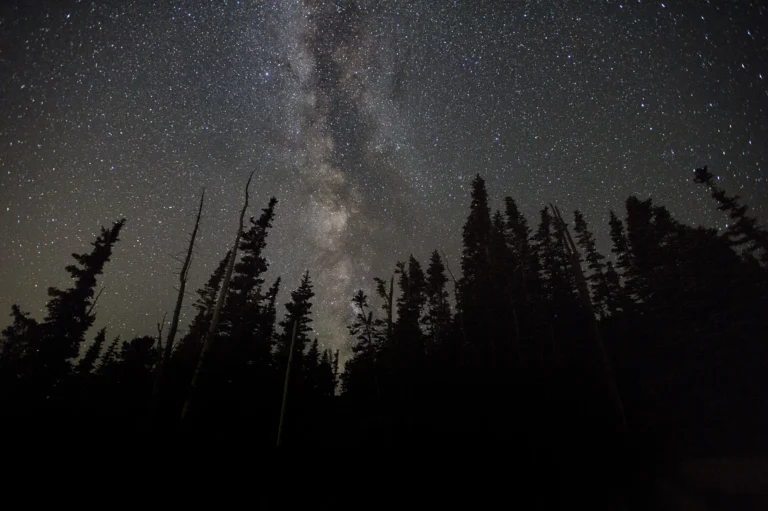
The first time I stepped into a temperate rainforest, the silence overwhelmed me. Not complete silence—but the muffled quiet that comes when towering trees create a living cathedral above your head. Moss draped everything like nature’s own velvet curtains. The air itself felt different. Thicker. Richer. Alive.
That moment changed how I understood forests forever. These aren’t just collections of trees. They’re complex ecosystems that literally breathe life into our planet.
World Rainforest Day on June 22nd reminds us why these green lungs matter so much.
The Birth of a Global Movement
Founded in 2017 by Rainforest Partnership, World Rainforest Day celebrates the importance of healthy, standing rainforests for climate, biodiversity, culture, and livelihoods— and convenes a global movement to protect and restore them. The date wasn’t chosen randomly. June 22nd falls during the summer solstice period, when the northern hemisphere experiences its longest day—a perfect metaphor for shining light on rainforest conservation.
This relatively new observance has grown rapidly. World Rainforest Day aims to encourage people to learn more about rainforests and join efforts to protect and preserve these forests for generations to come. What started as an awareness initiative has evolved into something more urgent. Rainforests have been disappearing and taking the rich diversity of flora and fauna with them because of increasing deforestation and climate change.
The timing couldn’t be more critical. We’re losing these irreplaceable ecosystems faster than we can study them.
Why Rainforests Matter to Outdoor Enthusiasts
Rainforests are lush forests that have a continuous tree canopy. The entire forest is heavily dependent on moisture. But these simple words don’t capture their true significance. For those of us who spend time in wild places, rainforests represent the pinnacle of natural complexity.
A majority of living organisms — birds, animals, plants, and trees — are native to rainforests. Think about that statistic during your next hiking trip. Most of the wildlife diversity we cherish originated in these dense, green worlds. A large number of species of mammals, reptiles, birds, invertebrates, and amphibians are found in rainforests.
I’ve witnessed this biodiversity firsthand during expeditions to Pacific Northwest old-growth forests. In a single square meter, you might find dozens of plant species. Fungi connecting tree root systems in underground networks. Birds that nest nowhere else. Insects that exist in micro-climates created by fallen logs.
Rainforests are necessary as they are an important source of freshwater for humans. Every watershed adventure, every fishing trip to pristine streams, every camping expedition near clean water sources connects back to forest health. These ecosystems don’t just hold water—they create it through transpiration and precipitation cycles.
The Hidden World Above and Below
The forest floor receives very little light—only 2% of the light reaches the forest floor. This creates distinct vertical worlds within a single forest. I’ve learned to appreciate each layer during my explorations.
The forest floor, dim and rich with decomposing matter, supports entirely different species than the understory. Mid-level canopies host their own communities. And the emergent layer above? Almost a quarter of insect species are believed to live in the rainforest canopies. Most of us will never see these aerial ecosystems, yet they’re teeming with life.
Rainforests are so dense and thick that they have not been fully explored, and there are likely millions of species of plants to be discovered. For outdoor enthusiasts, this represents both opportunity and responsibility. We’re exploring ecosystems that science hasn’t fully catalogued yet.
Nature’s Pharmacy and Climate Guardian
A quarter of all known natural medicines in the world have been found in rainforests. This statistic hits differently when you’re carrying a first aid kit into the backcountry. Many medications we rely on—from aspirin derived from willow bark to modern cancer treatments—trace back to forest compounds.
But rainforests provide services beyond medicine. Additionally, they absorb carbon dioxide and protect the earth from the effects of climate change. Every tree removed reduces our planet’s capacity to process atmospheric carbon. Climate change directly impacts every outdoor activity we love. Shifting weather patterns. Changing seasons. Extreme weather events.
Apart from freshwater and the production of oxygen, several ingredients used in everyday life and manufacturing are derived from rainforests. Your outdoor gear likely contains rainforest-derived materials. Natural rubber. Plant-based fabrics. Wood products. Even some synthetic materials trace back to forest compounds.
The Race Against Time
Brazil declares the loss of forests to be a matter of concern and a national emergency. This wasn’t an overreaction. Illegal mining, timber logging, and slash and burn agriculture result in overexploitation of rainforests across the world. The timeline of rainforest destruction accelerated dramatically in recent decades.
We know that species are disappearing faster than they can be discovered. For outdoor enthusiasts, this represents a profound loss. Every extinct species represents lost opportunities for discovery, medicine, ecological relationships, and simple wonder.
The pressure is real. Ending deforestation requires unrelenting, unified action. World Rainforest Day exists because individual awareness must scale up to collective action.
Taking Action Beyond Awareness
This day highlights rainforests and their critical role in safeguarding our future on this planet, showcases innovative and emerging solutions for their protection, and inspires individual and collective actions around the world for holistic forest impact. But what does action look like for outdoor enthusiasts?
Start with your purchasing decisions. Research companies that source materials sustainably. Support businesses committed to zero-deforestation supply chains. Choose gear from manufacturers with transparent environmental practices.
Consider your travel choices. Ecotourism can provide economic incentives for rainforest protection, but only when done responsibly. If you visit rainforest areas, work with local guides, respect wildlife viewing guidelines, and leave no trace.
Support organizations working directly on rainforest conservation. That’s why we’re working with companies and organizations across all sectors to create pledges that drive immediate rainforest impact around the world. Your contribution can fund everything from land acquisition to community education programs.
The Connection to Our Adventures
Every outdoor adventure connects to rainforest health in some way. The weather patterns that determine our climbing seasons. The watershed systems that fill our favorite fishing streams. The global climate systems that influence everything from ski conditions to wildlife migration patterns.
Many popular houseplants like the Pothos and Monstera, are native to rainforests. Even our indoor plants remind us of these incredible ecosystems. But houseplants can’t replace the ecological services of intact rainforests.
We want to make sure that future generations have these advantages as well. This motivation drives many of us into outdoor advocacy. We want our children to experience the same wild places that inspire us.
Where the Canopy Opens to Possibility
World Rainforest Day asks us to look beyond our immediate outdoor experiences. Yes, we love the mountains we climb and the rivers we fish. But those local ecosystems connect to global systems that include rainforests thousands of miles away.
We want to ensure that all the undiscovered species have a chance to be discovered. This hope captures something essential about outdoor exploration. We’re not just seeking personal adventure—we’re participating in humanity’s ongoing relationship with the natural world.
The next time you step into any forest, remember that moment of cathedral-like silence I described. Rainforests around the world create that same sense of wonder, magnified by incredible complexity and biodiversity. They’re breathing. They’re working. They’re supporting life on a planetary scale.
World Rainforest Day on June 22nd gives us one focused day each year to appreciate these green lungs. But the real work happens in the daily choices we make as outdoor enthusiasts, consumers, and advocates for the wild places we love.
Standing beneath that temperate rainforest canopy years ago, I felt small in the best possible way. Connected to something larger than any single adventure. That’s the feeling World Rainforest Day aims to cultivate—wonder that transforms into action.






